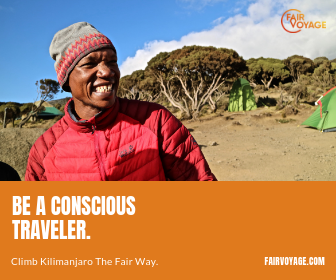Routes offered by tour operators organising Kilimanjaro climbs range anywhere between 5 and more than 9 days. So how long does it take to really climb Kilimanjaro?
Of course we all want to keep is as short as possible, right? After all, who wants to spend more time than necessary without a shower and sleeping in a tent and not showering? And the longer, the more expensive. At least that was my initial thinking…
Unfortunately, keeping it SHORT is a very BAD idea. Here’s why: The shorter your time on the mountain is, the lower your chances of summit success will be. In fact, climbing too fast can lead to altitude sickness that can even lead to death on Kilimanjaro in the most extreme cases.
On a five-day route, only 27% of hikers make it to the summit. This increases to 44% on a six-day route. Still awfully low, don’t you think? Luckily, that percentage increases to 85% for eight-day routes, and presumably even more for longer routes. There are no official statistics for nine-day routes, but operators offering them speak of 98-99% summit success.
Some people cope with the high altitude better than others, and even the same people may handle altitude differently at different times. There’s really no way to predict how you will cope with it.
The single best thing you can do to maximize your chances of summit success is to take your time – the LONGER the BETTER.
Even your fitness level is only secondary; and athletes have not been found to perform any better. Rather to the contrary, they tend to ascend too fast jeopardizing their own success exactly because of their high fitness level.
We were a group of 12 hikers of all shapes and age groups (from 30 to 60) on a nine-day route and all of us (100%) reached the summit. It’s just one data point, but clearly confirms the above logic.
Note the success rate statistics are based on information provided by my operator, who quotes Kilimanjaro National Park data reported in 2006 as source. I was not able to locate the original source of information or any more up-to-date data. The same source also reports an average success rate across all routes of 45% (as of 2006). As there has been an increase in the average route length following more awareness of the role of acclimatization, I assume that the average success rate most likely has gone up significantly over the past ten years. Everyone who quotes average success rates of 50% or less is using seriously outdated information. It rather seems to me that almost everyone with the right preparation and the right approach has a fairly close to 100% chance of summiting.
Have you hiked – how many days and what was the summit success rate in your group? I’m curious to hear about your experience. Please leave your comments below.







Leave a Reply
You must be logged in to post a comment.